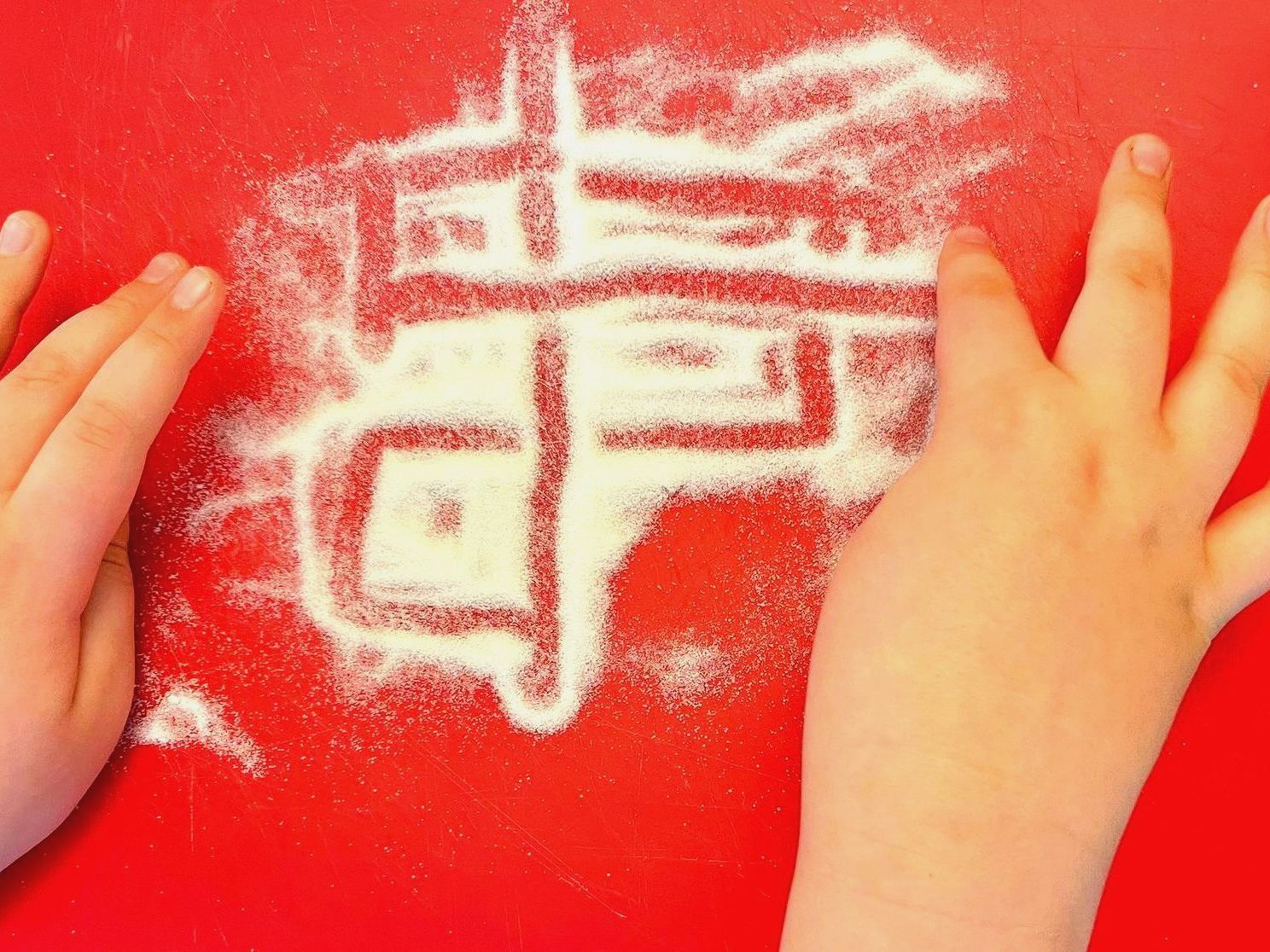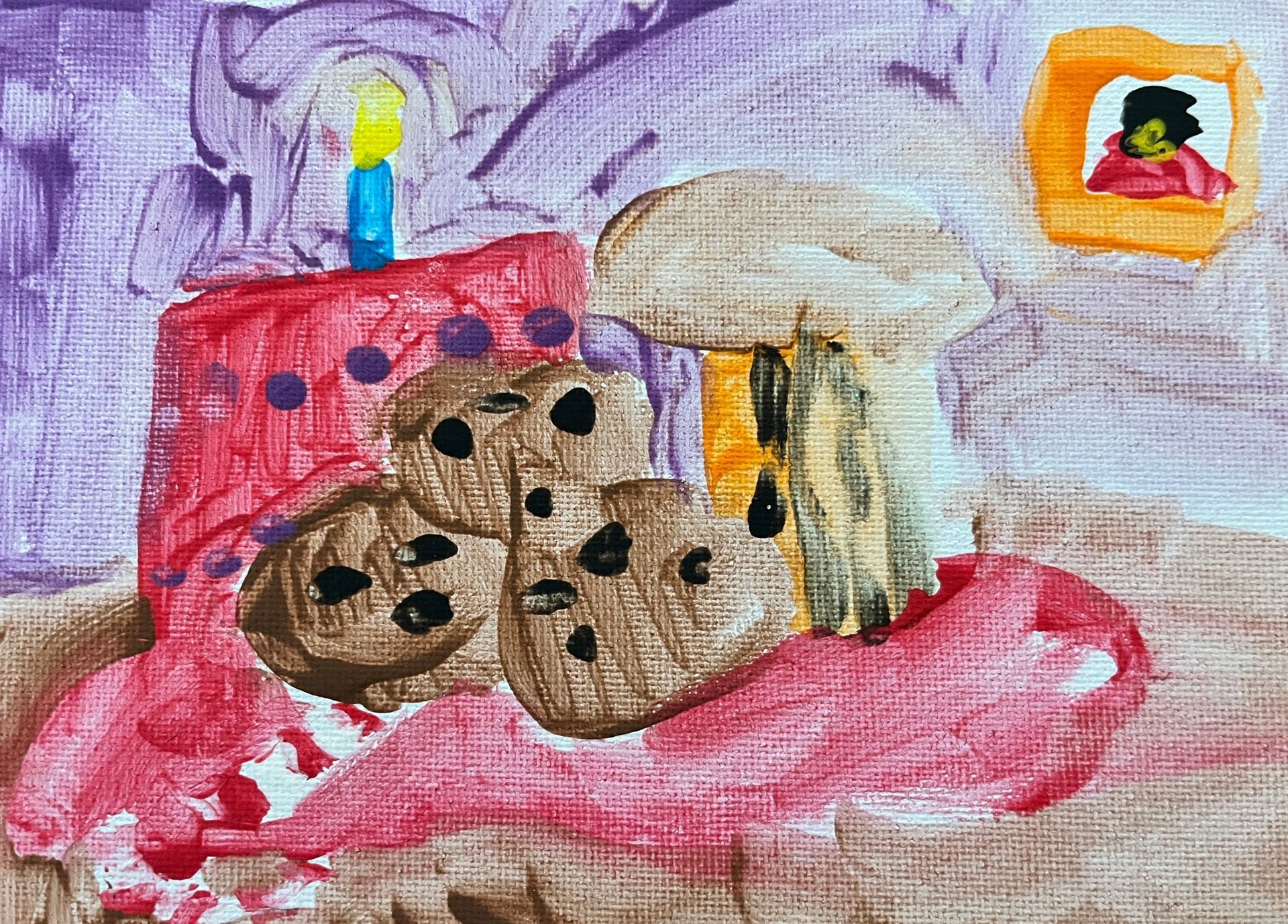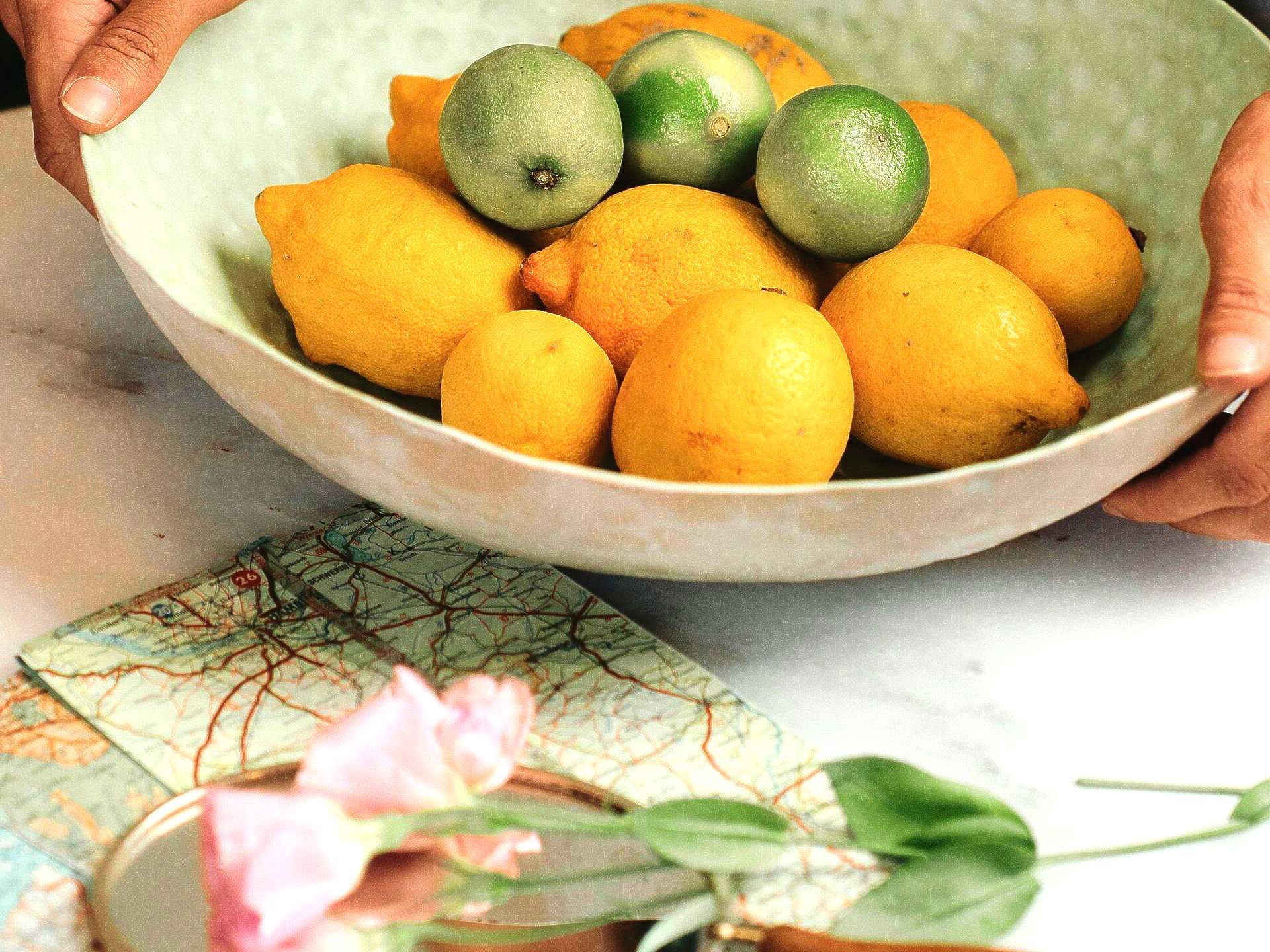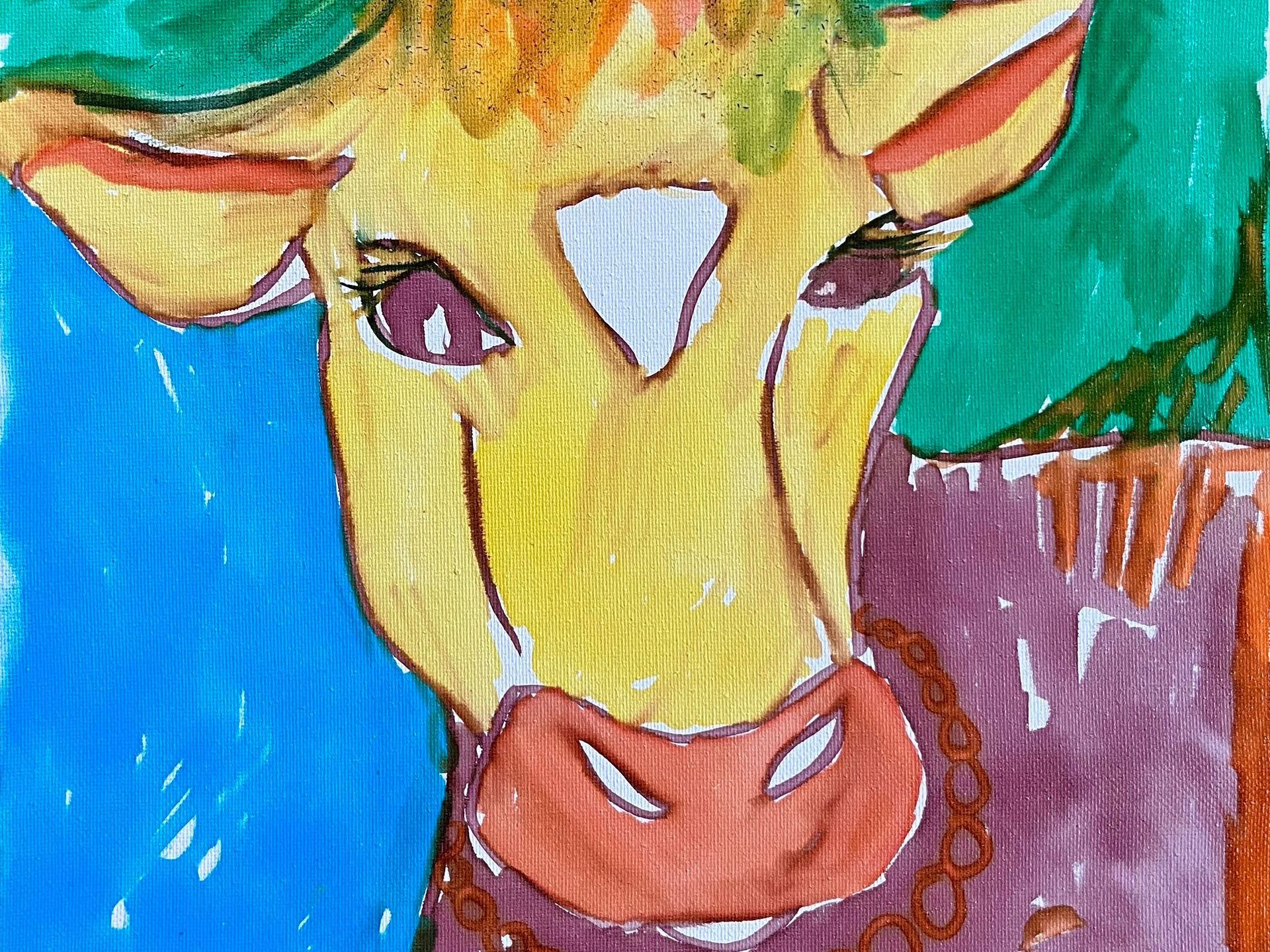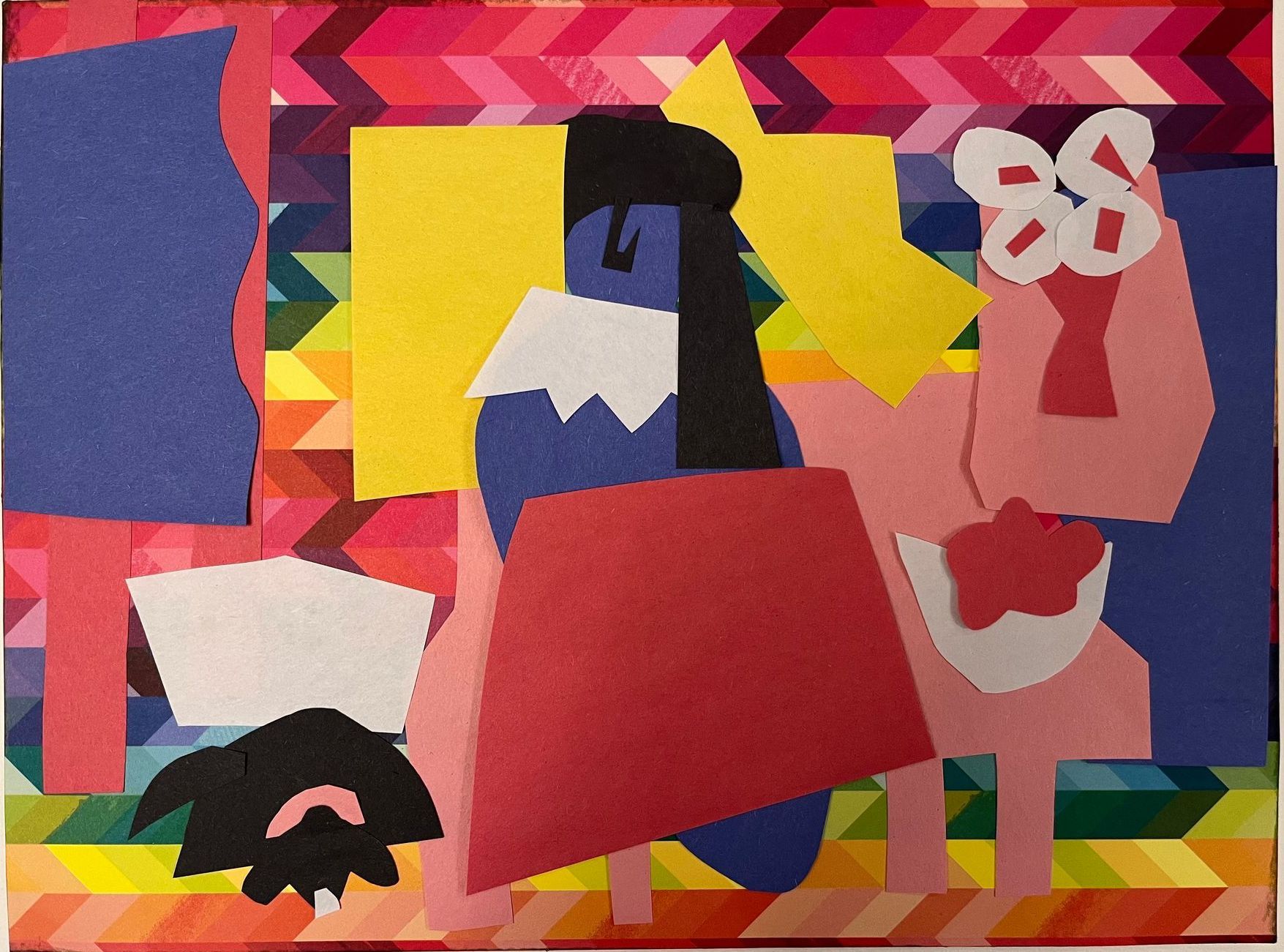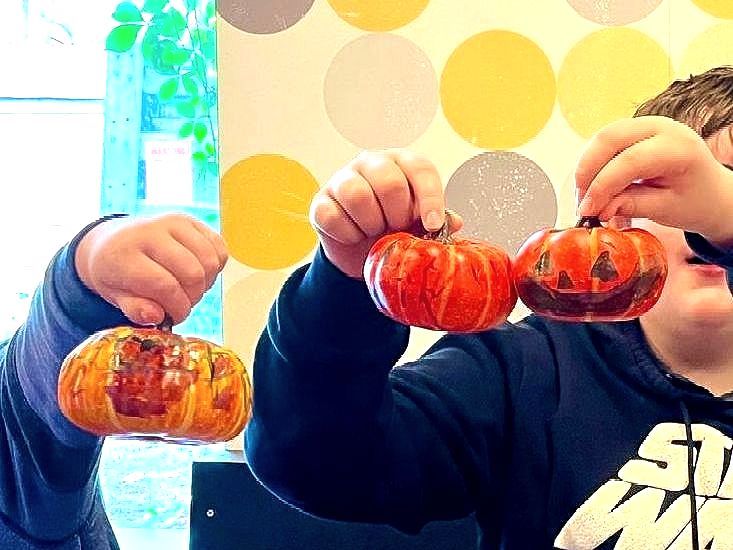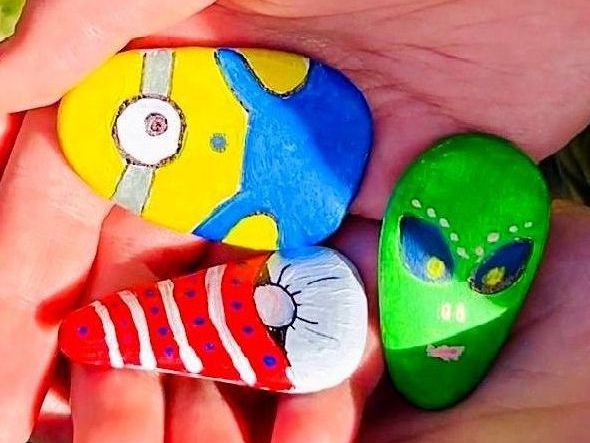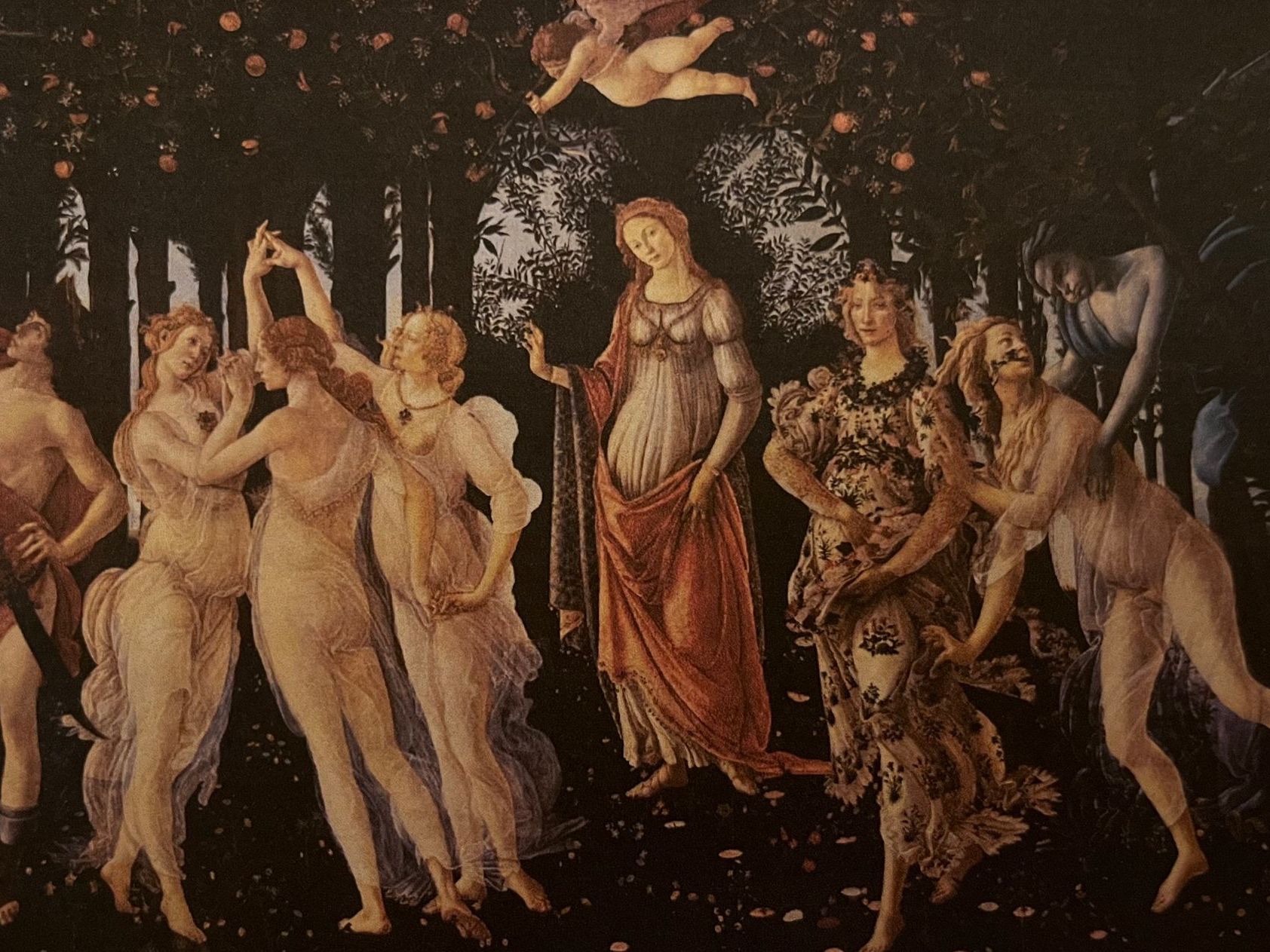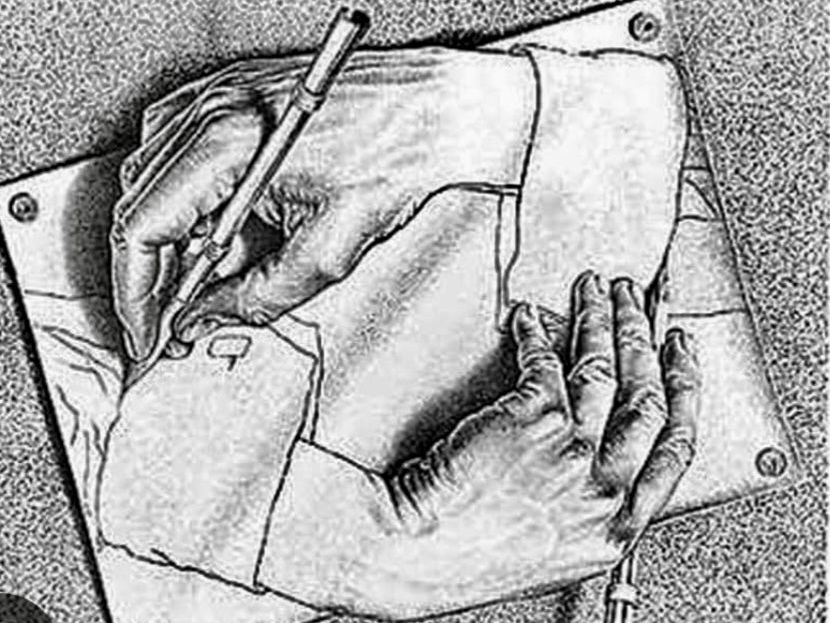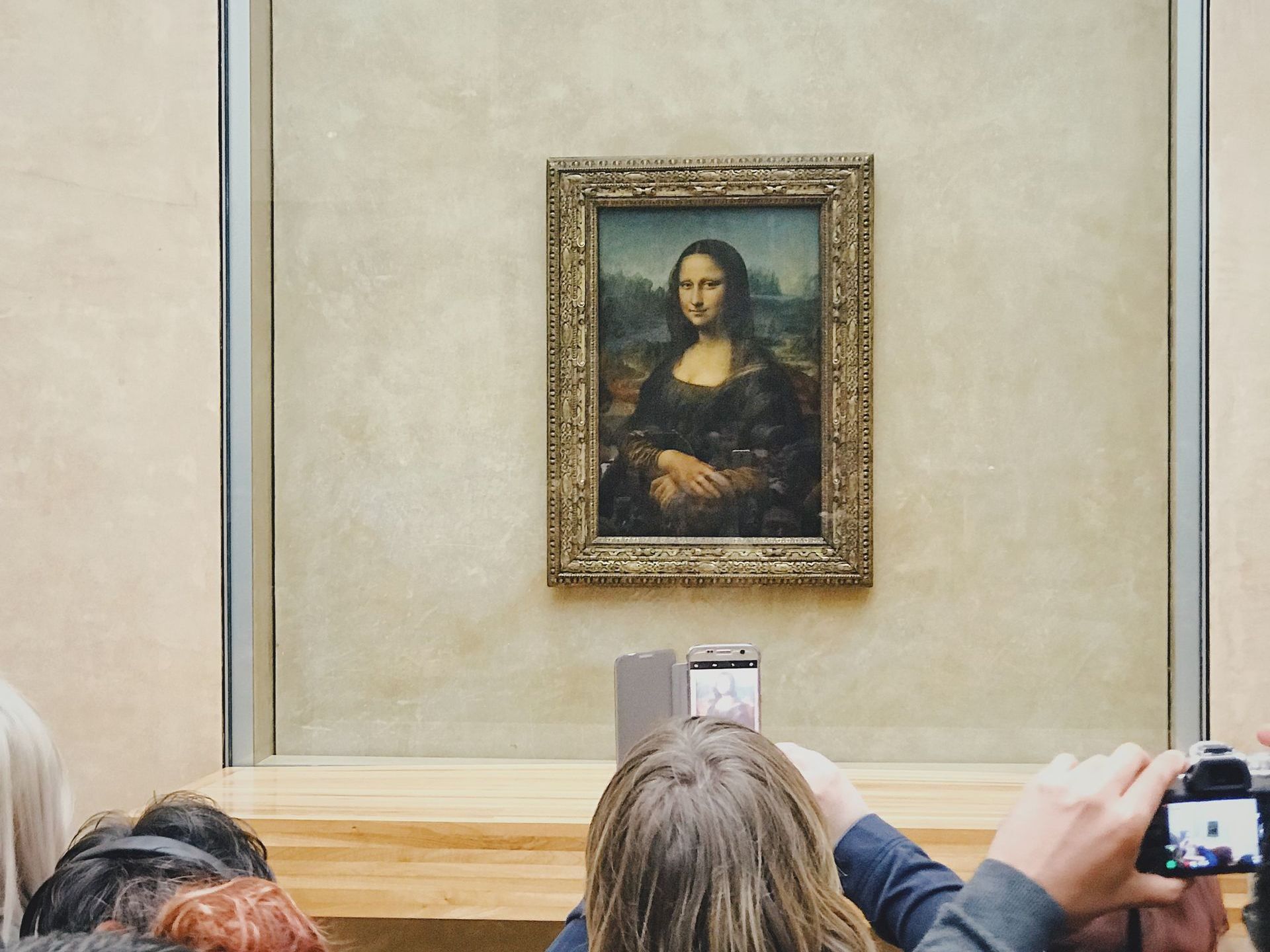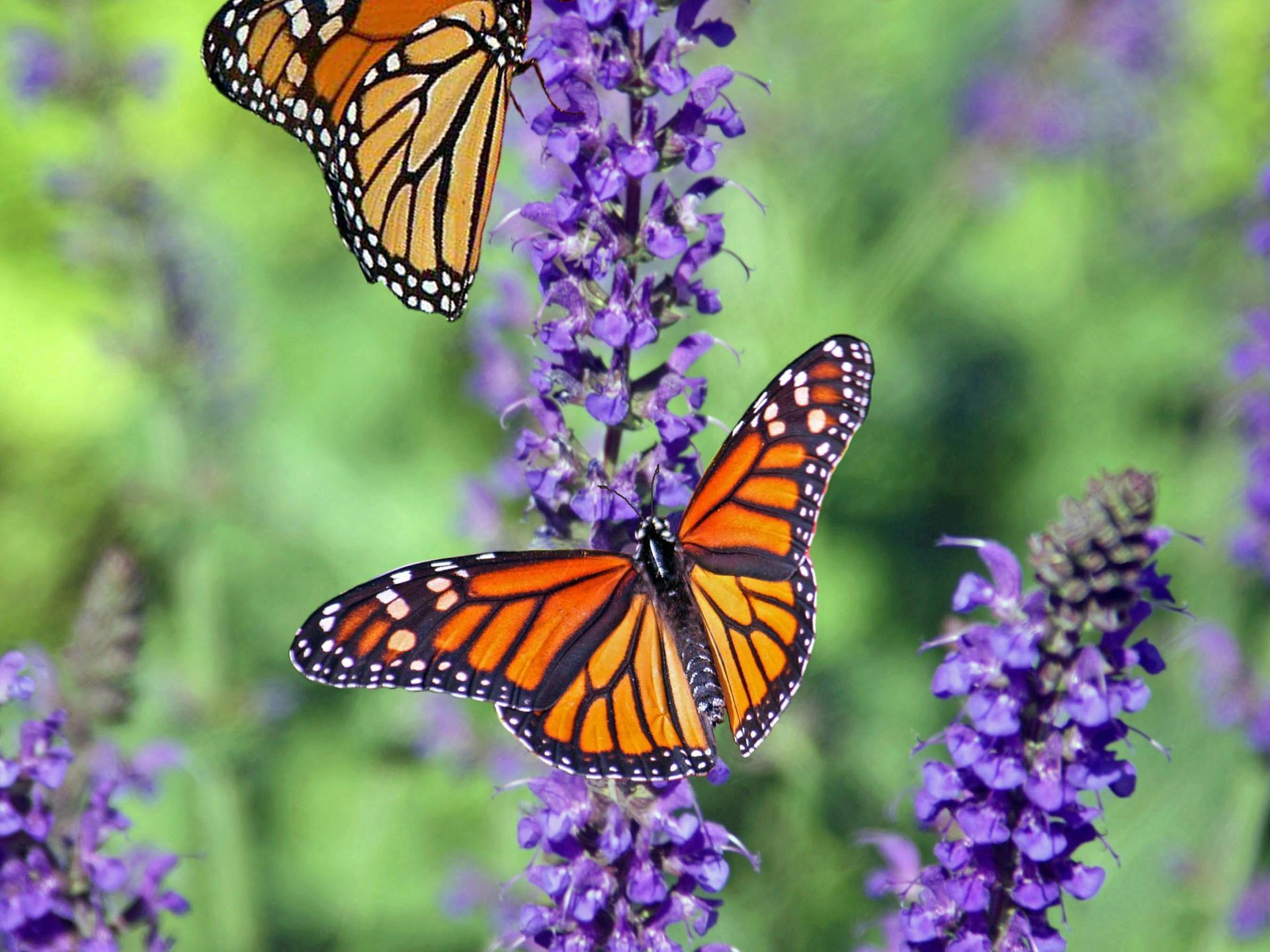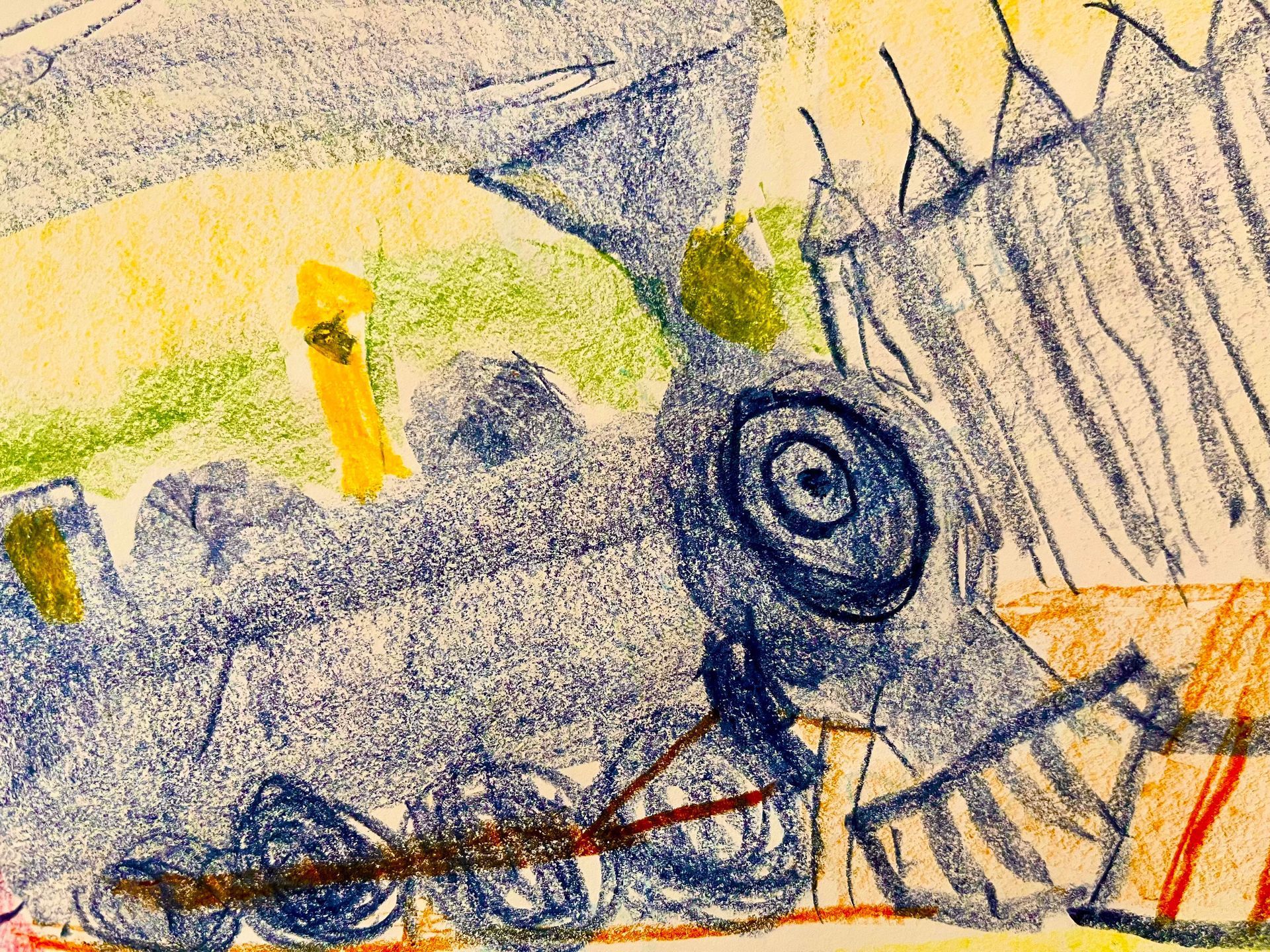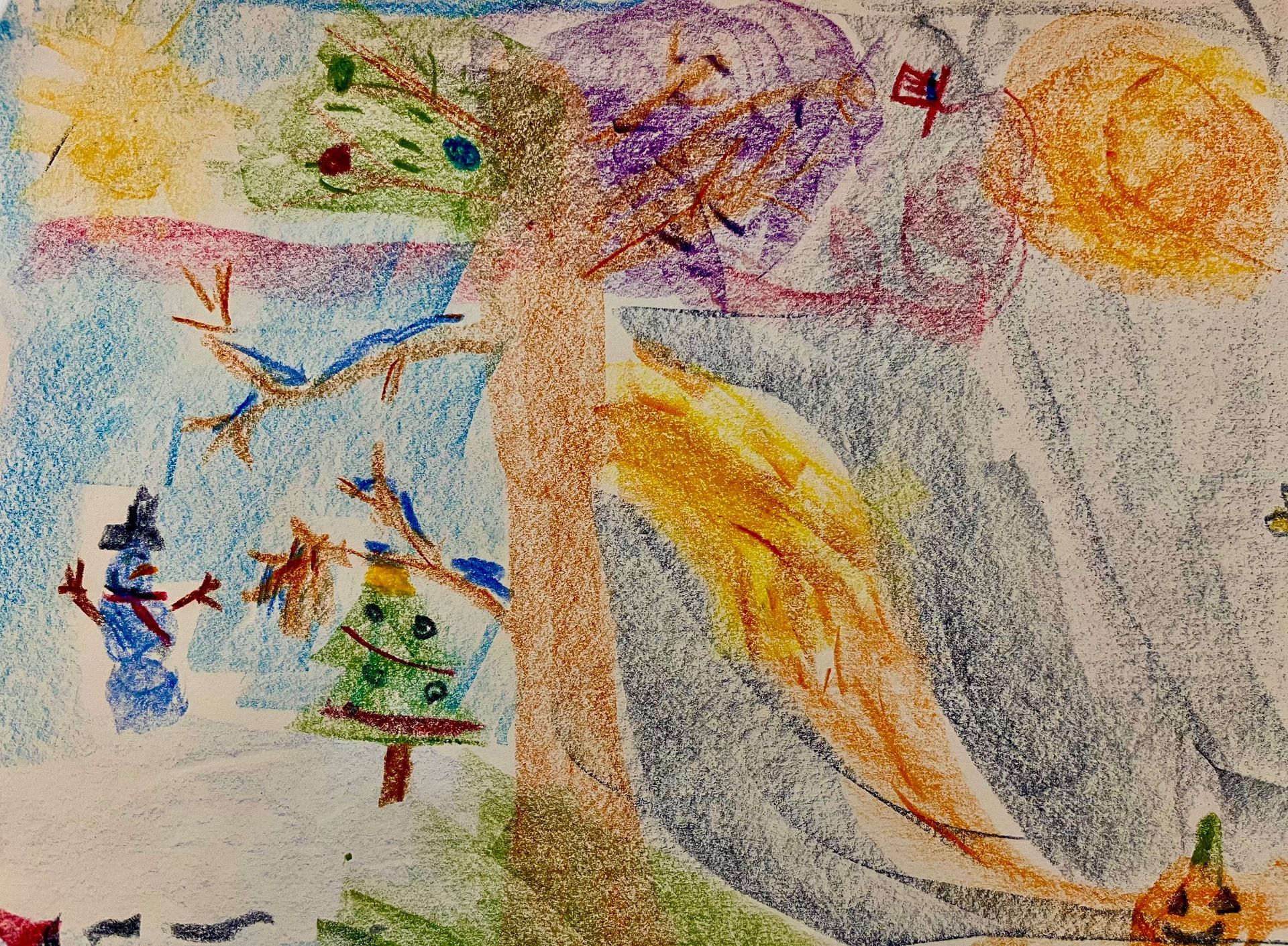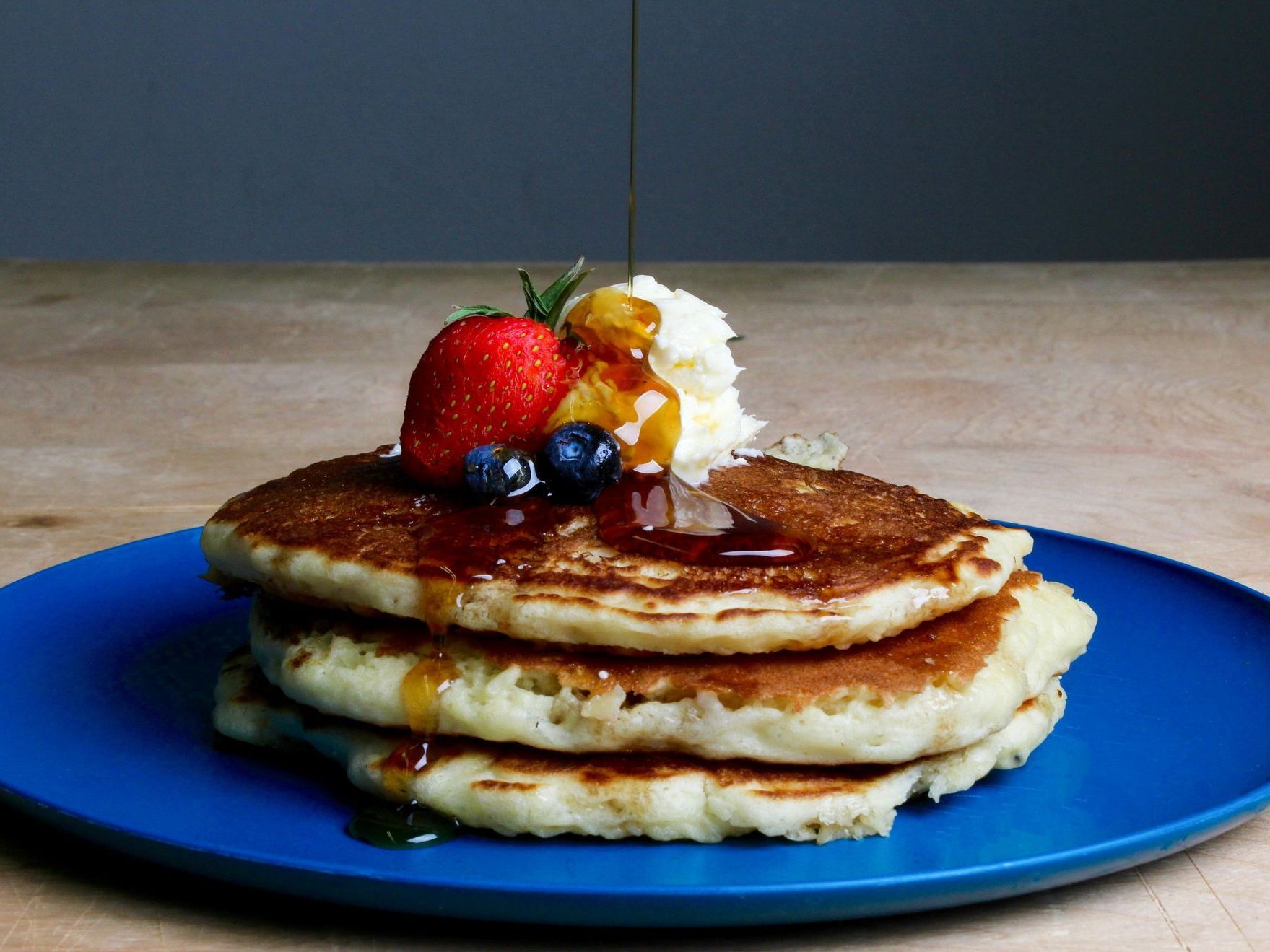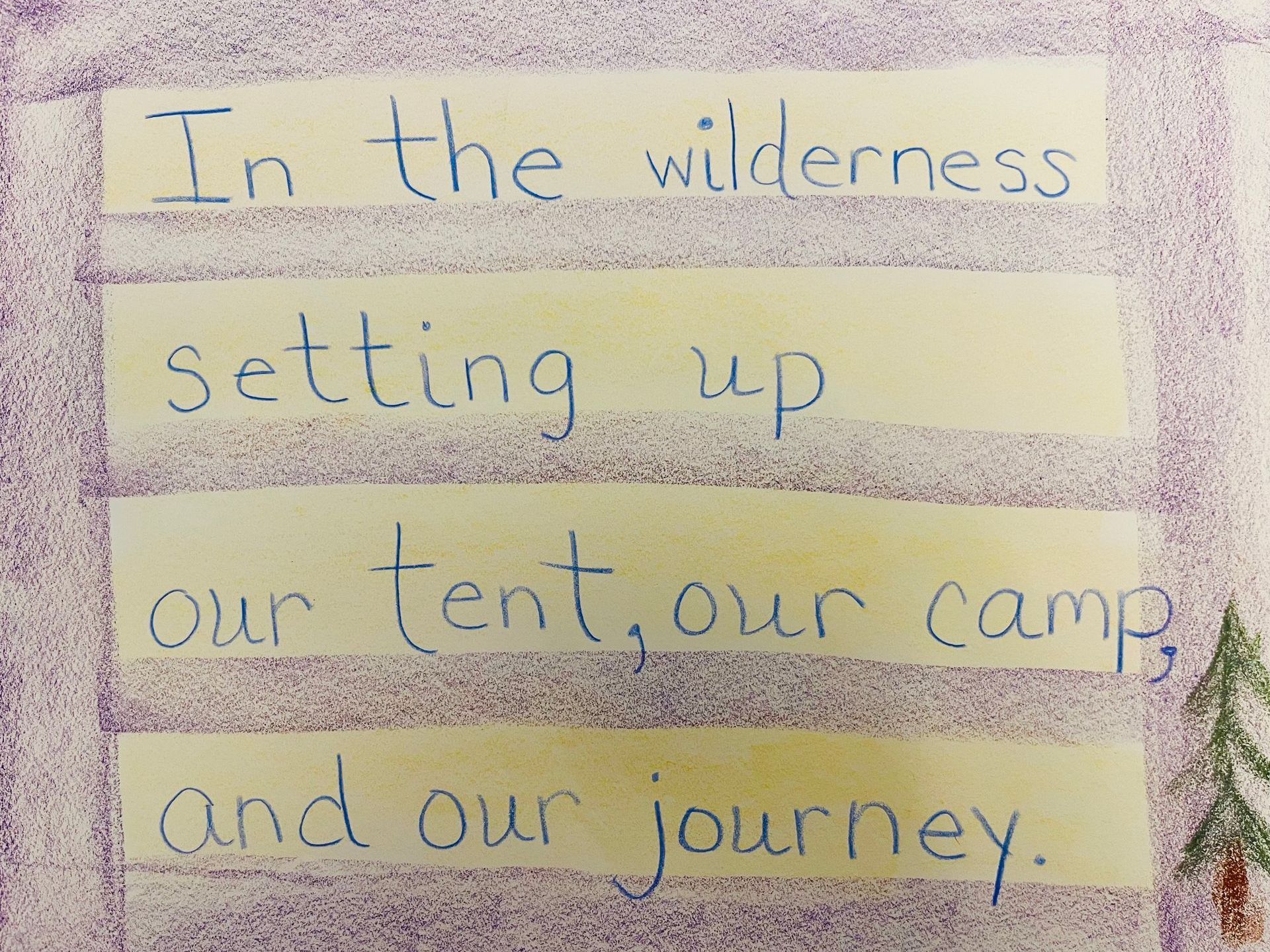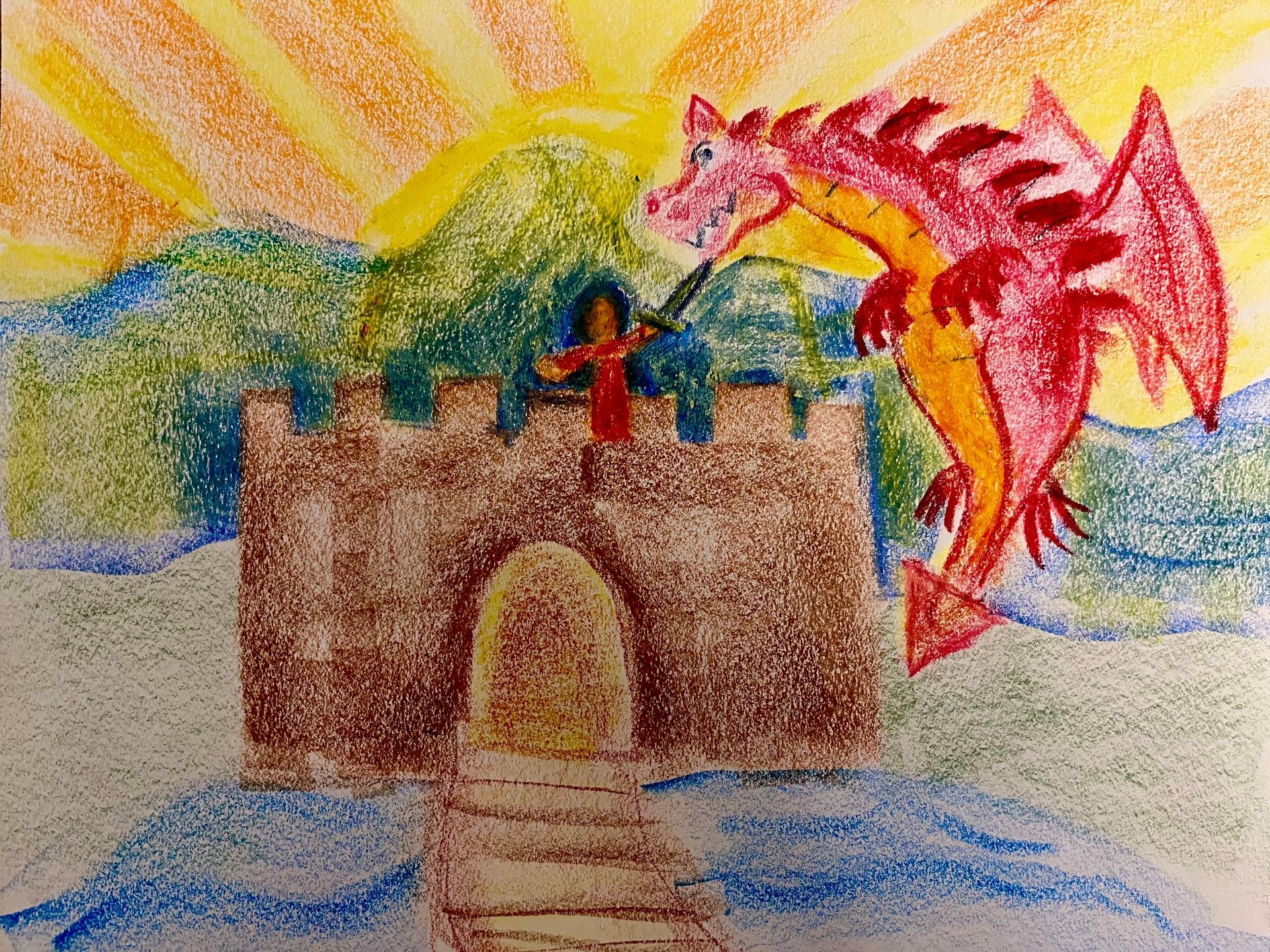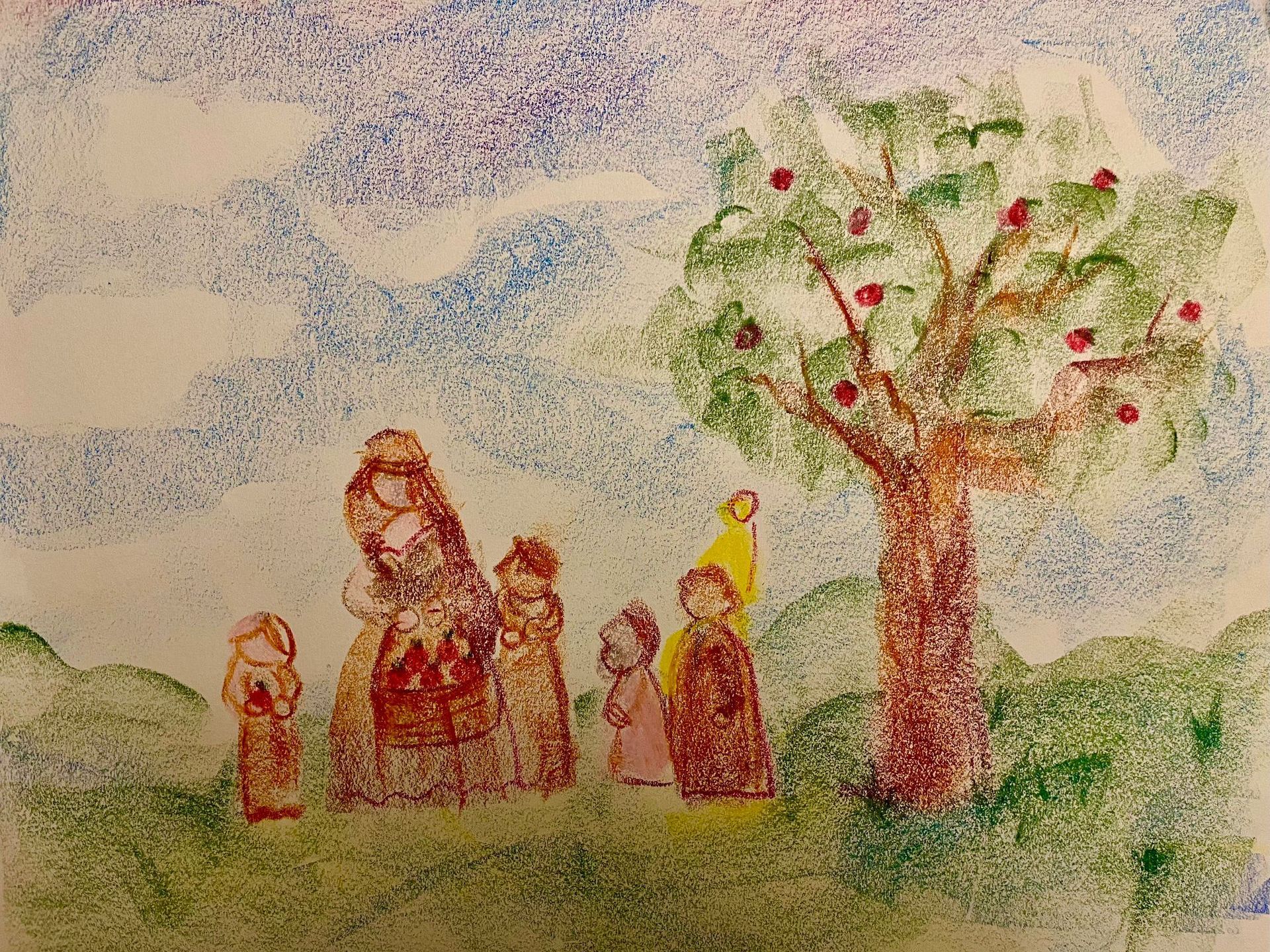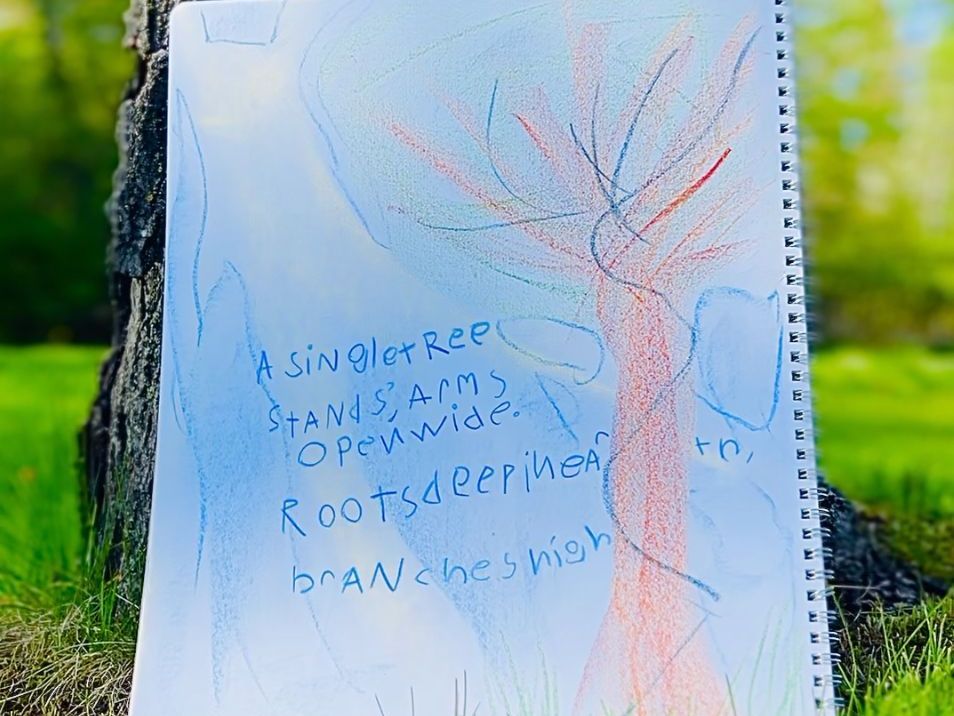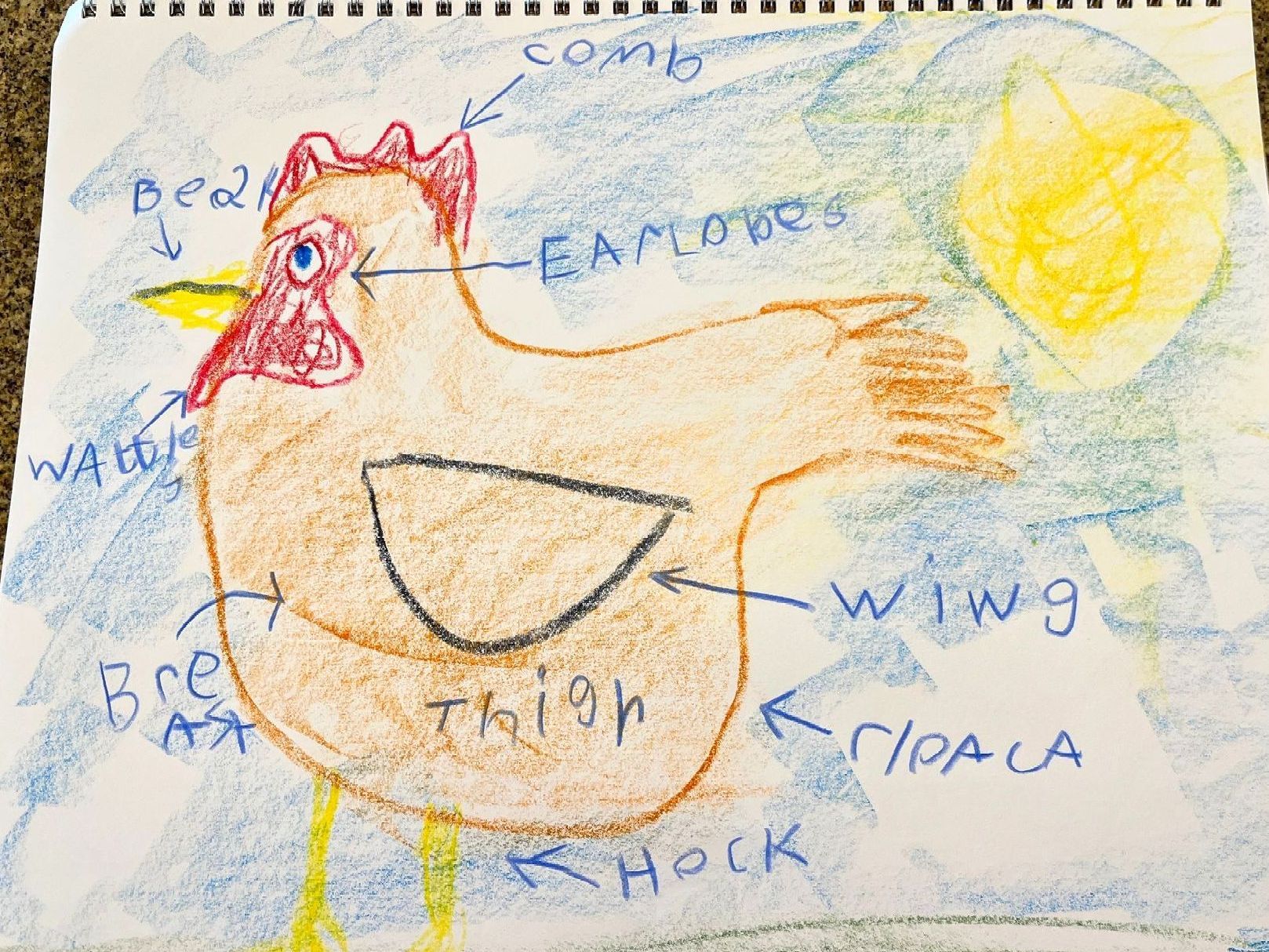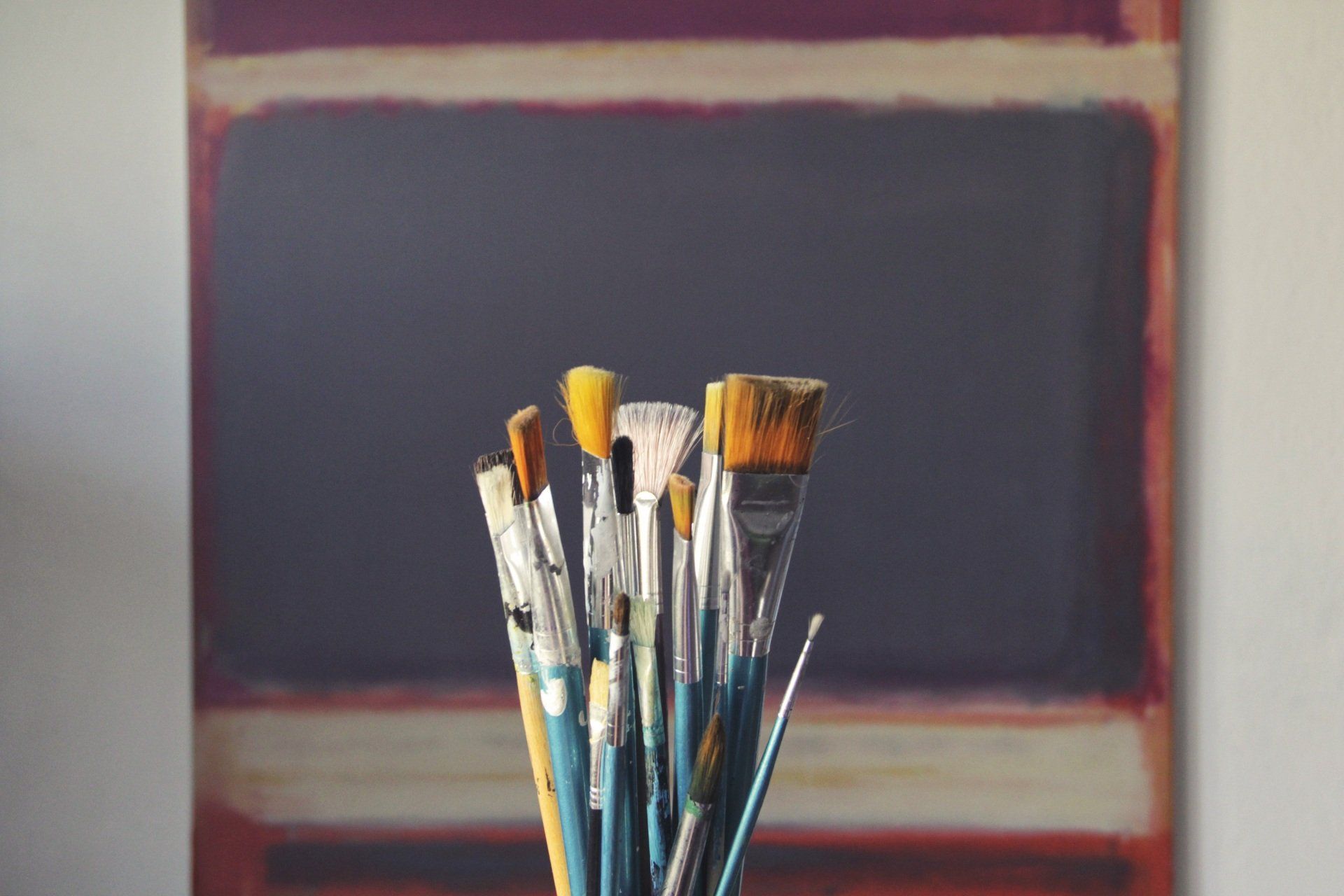inspire

Art 🎨 Projects
Artist Study: Motoi Yamamoto
lesson🧂 A creative journey that combines art and self-reflection!
MATERIALS:
All you need is salt – the same you find in the ocean or on your dining table!
🌀 We'll be crafting a Salt Labyrinth, guided solely by the touch of your finger. As you trace the paths, let your mind wander through the twists and turns of your personal maze.
ARTIST STUDY:
Our inspiration flows from the incredible work of Motoi Yamamoto, a Japanese artist of today who elevates sea salt to a medium of memory and meditation. His salt installations are more than art; they are rituals that purify the mind 🌊 Yamamoto harvests salt directly from the sea, a testament to his commitment to his craft and the environment. He weaves tales of memory, loss, and hope with each intricate pattern. And in a beautiful renewal cycle, at the exhibit's end, he returns the salt to the ocean – a final act that blends art with the sacred act of letting go. 🤍 It's an invitation to introspection with the use of white salt; the pure white color is symbolic of Japan's quest for purity – much like the white on their flag that signifies a nation's virtue and the sacred colors of the divine. So, join us to create your own labyrinth of memories.
REVIEW
Can you describe what it feels like to trace your finger through the salt labyrinth?
How do you think creating a Salt Labyrinth can help you think about your memories and feelings?
Salty Art
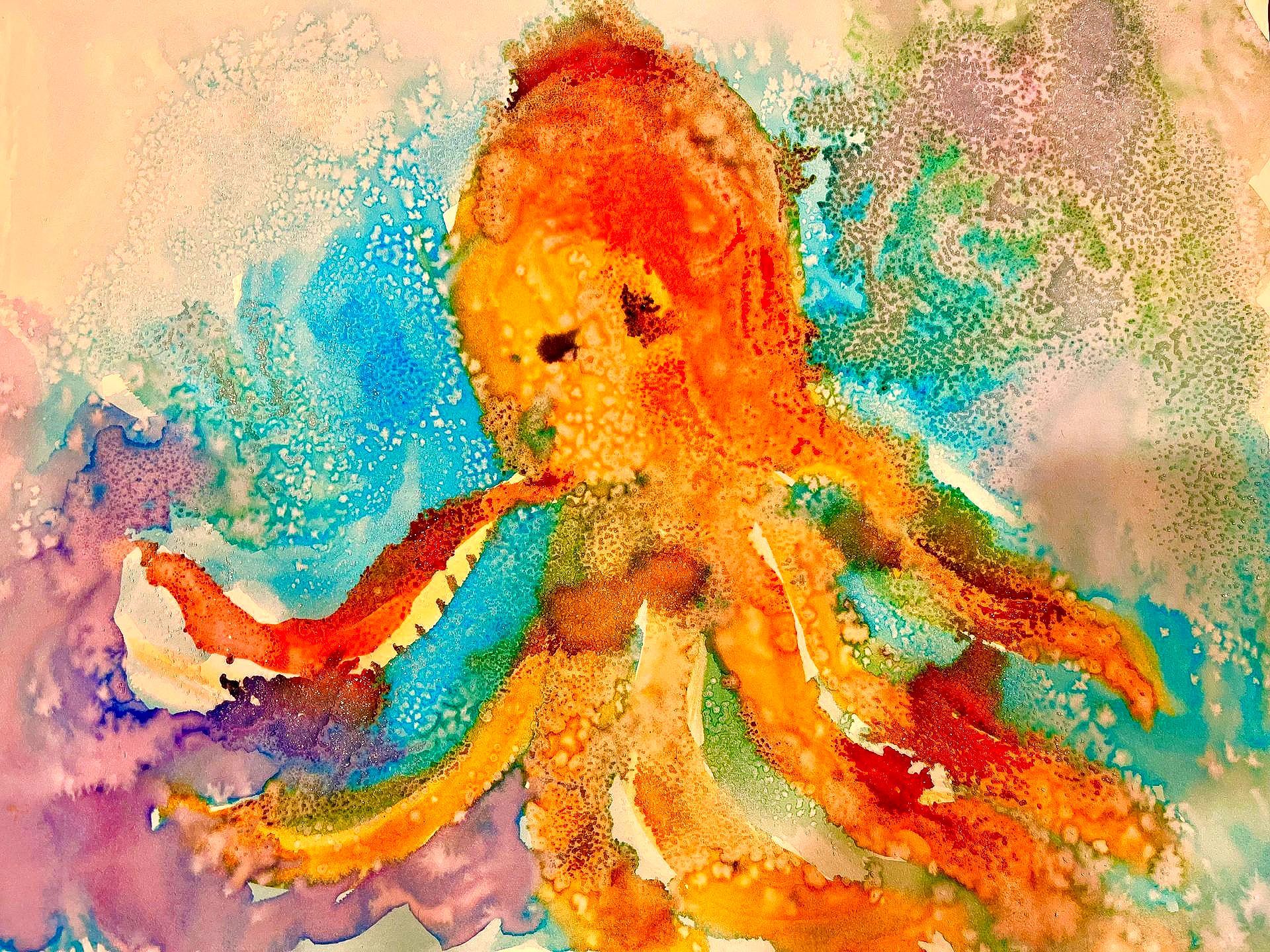
🎨🧂 Today's palette merges watercolors with the crystalline charm of salt.
MATERIALS:
Gather your watercolor paints, salt, paper, and brushes.
1️⃣ Paint a memory or reflection onto the watercolor paper.
2️⃣ While the hues are fresh, sprinkle salt across the paper.
3️⃣ Watch as the salt dances with the paint, crafting textures and patterns as unique as snowflakes.
4️⃣ Once dry, decide whether to brush away the salt or let its sparkling presence remain.
And here's a twist – the salt you use can transform your artwork unexpectedly. Kosher salt, table salt, sea salt – each brings its own magic to your watercolor.🌌
Through this project, we honor the innovative spirit of Motoi Yamamoto, the Japanese artist who sees salt as a storyteller.
REVIEW
What do you think might happen to the paint when you sprinkle salt on it?
Artist Study: Wayne Thiebaud
Lesson🍰🖌️ Ready to mix a dash of sweetness with a sprinkle of creativity? Let's dive into the world of 'Desserts from Memory'!
But before we pick up our brushes...
MATERIALS: Make or pick up a favorite dessert! Let the scent of delicious treats be the muse for your future artwork. 🍬
ARTIST STUDY:
🎨 Wayne Thiebaud was known for his depictions of desserts. His past as a cartoonist added a playful spirit to his work, while his mastery of the palette knife gave his paintings life-like texture. His shadows added depth and dimension that make his desserts look even more enticing. Though some may align his work with Pop Art, Thiebaud's unique approach to light and shadow places him in his own category. 🎂
REVIEW
What dessert would you choose to make for this activity, and why?
How do you think Wayne Thiebaud's cartoonist background influenced his dessert paintings?
Desserts from Memory
🎂🖼️ Art lovers and sweet tooths, it's time to blend your passions in 'Desserts from Memory'! 🎨🧁
MATERIALS:
Grab your paints, paper, canvas, brushes, and get ready to whisk up some art.
1️⃣ Close your eyes and picture a bakery brimming with your favorite sweet treats.
2️⃣ Open your eyes and let your imagination spill onto the canvas, painting a dessert that's uniquely yours.
3️⃣ No reference needed – just pure, sweet imagination.
In this session, we pay homage to artist Wayne Thiebaud, the iconic American artist whose memories of pastries and pies turned into a vibrant feast on canvas. Thiebaud's work served up bold color and
delicious texture. Let's celebrate Theibaud's legacy by creating our own colorful memories. Whether it's a slice of pie that reminds you of grandma's kitchen or a doughnut from your favorite shop, let the sweet memories guide your brushstrokes. Here's to creating art as comforting as our favorite desserts!
REVIEW
Can you describe what your favorite bakery looks like in your imagination?
How do you think painting without using a reference might change the way your dessert artwork looks?
Artist Study: Vincent Van Gogh
Lesson🎨✨ It’s time to curate a Still-Life project!
🖼️ MATERIALS:
Look around you – any room items will do. Set the stage for your still-life composition, and select objects from your surroundings – a bottle, a book, or perhaps a blooming flower. Arrange these items.
ARTIST STUDY:
Vincent Van Gogh found beauty in household objects. His sketches and paintings brought a vibrant soul to still-life’s, transforming the ordinary into the extraordinary. Van Gogh’s genius was unrecognized in his lifetime, and he sold only one painting while alive. Vincent Van Gogh's brother, a Dutch art dealer, struggled to promote Vincent's artwork during his lifetime. Tragically, shortly after Vincent’s death, his brother also succumbed to illness, leaving his widow, Johanna Van Gogh-Bonger, and their young son to inherit Vincent’s vast collection of art. With financial hardship and holding Vincent’s legacy in her hands, Johanna took a decisive role. She worked to showcase and sell Vincent’s art to provide for her family. In addition to the artwork, Johanna possessed a treasure trove of correspondence—439 letters that Vincent had written to his brother. Recognizing their cultural and emotional value, she published these letters alongside Vincent’s art, offering profound insight into his thoughts and techniques. This strategic move significantly elevated Vincent’s reputation, turning his art into some of the most coveted pieces globally. The devotion of his sister-in-law, Johanna Van Gogh-Bonger, illuminated Van Gogh's legacy. With 439 letters and a treasure trove of unseen art, she built the narrative that propelled Van Gogh to fame. 💌🌟
REVIEW
✨ What everyday objects might you include in your still-life composition?
✨ How do you think Vincent Van Gogh's brother and sister-in-law helped share his artwork and legacy with the world?
Still-life
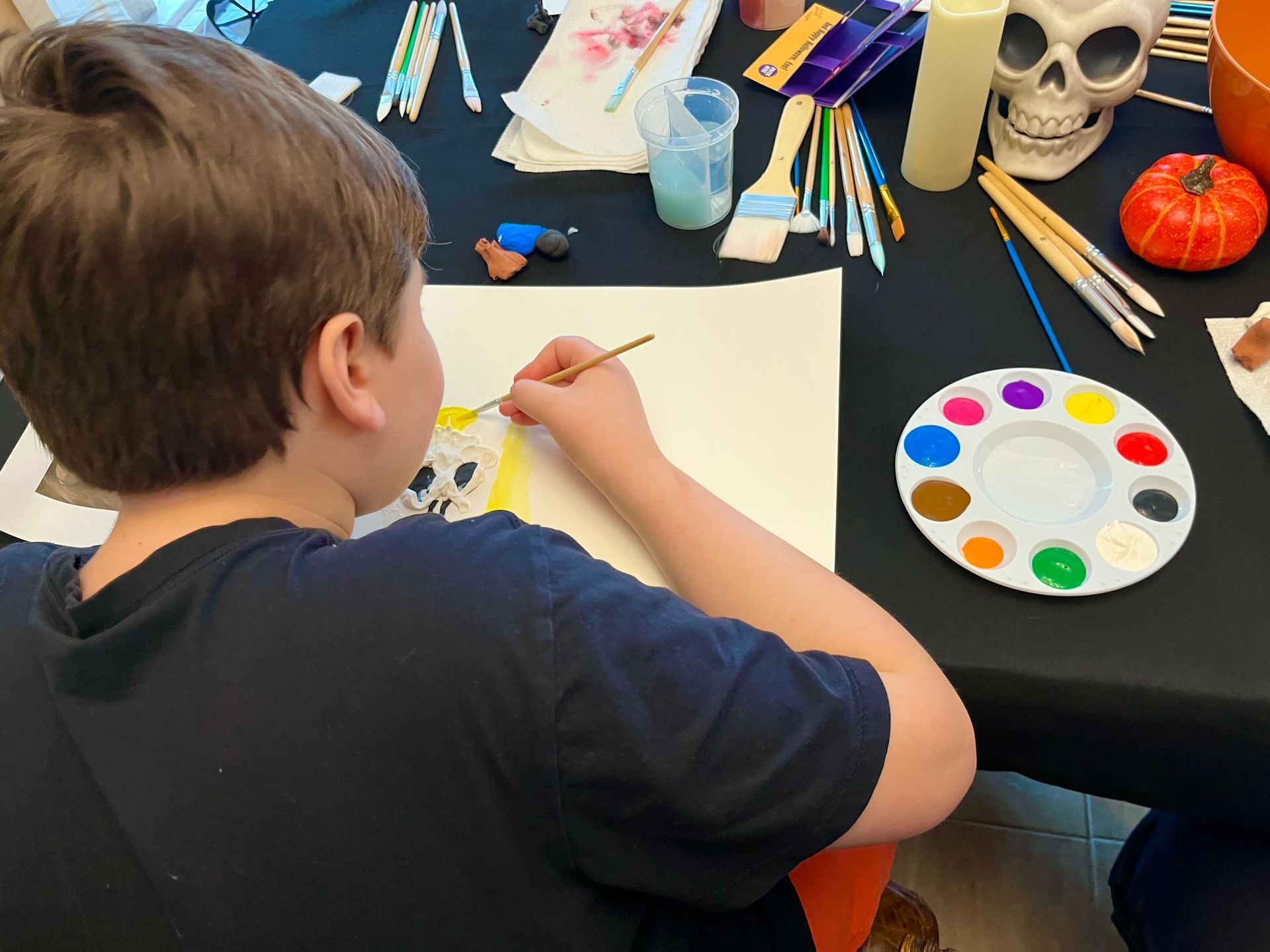
🌻✨ Get ready to create your Still-Life! 🖼️🎨 MATERIALS:
Gather paper and paint
1️⃣ Observe the still-life scene you created.
2️⃣ Use the paper as your canvas.
3️⃣ As we craft, draw inspiration from the Dutch painter Vincent Van Gogh (1853-1890). His post-impressionist work, including the celestial swirls of "Starry Night," shook the art world with its emotional depth and vibrant energy. Post-Impressionism, the movement Van Gogh pioneered, broke from the naturalistic constraints of Impressionism, showcasing the artist's inner world rather than the outer reality. His work invites us to express not just what we see but what we feel. Post-Impressionism emerged as a reaction against the Impressionists' focus on the natural representation of light and color. Instead, Post-Impressionists adopted a more expressive approach to painting.
REVIEW
What do you think Vincent Van Gogh wanted people to feel when they looked at his paintings like "Starry Night"?
Artist Study: Franz Marc
We're drawing inspiration from
ARTIST STUDY:
Franz Marc, a German Painter (1880-1916), was an Expressionist master who redefined nature painting. His canvases were more than mere depictions; they were symphonies of abstraction, color, and motion, echoing the animal's spirit and the artist's heart. 🖼️💭 Franz Marc believed that colors could change how we feel. He studied how Van Gogh used colors to show feelings in his art and learned from him. Like Marc, let your palette explore the emotional connections with the natural world.
Animal Portrait
🎨 Channel your inner Franz Marc for an 'Animal Portrait' art session about vibrant expression! 🌈🖌️ 🖼️
MATERIALS:
A 12x12 canvas and Crayola paint brush pens. That's it!
1️⃣ Choose an animal that speaks to your spirit.
2️⃣ With your brush pens, unleash a spectrum of bright, emotive colors onto the canvas, capturing the essence of your chosen creature.
3️⃣ Think less about replicating and more about reimagining; let the colors and shapes tell the story of the animal as you see it through your eyes.
REVIEW
🌳 If you could be any animal in the world, which one would you choose to paint on your canvas and why?
What colors do you think represent the feelings of your chosen animal?
Artist Study: Matisse
✂️🎨 Dive into the delightful world of ‘Painting with Scissors’! 🌈 🖼️ MATERIALS: Gather your construction paper, scissors, and glue because it's time to snip and stick your way into a collage of vibrant colors and shapes. Art Project Steps: 1️⃣ Free your imagination as you cut and tear through the paper. No rules, just playful creativity. 2️⃣ Explore shapes and compositions, combining pieces to form a visual harmony. 3️⃣ When your heart tells you it's just right, use glue to set your masterpiece in place. ARTIST STUDY: In the spirit of Henri
Matisse (1869-1954), the French artist
Let's learn about Henri Matisse, a famous artist who came up with a cool way to make art called "painting with scissors." When Matisse was older and couldn't see very well, he started to cut and tear pieces of paper and then arranged them into beautiful pictures. One of his most famous artworks made this way is called "Icarus." When his eyesight dimmed, Matisse's vision for art brightened, transforming paper into a dance of colors and shapes, with his
famous piece "Icarus" leading the way.
🌟✨ Channel Matisse's artistry; let each snip represent a brushstroke, each piece of paper a burst of pigment, and let your collage be a testament to creativity that knows no bounds. He showcased how, even without traditional paints, you can compose a piece as expressive as any painting.
Henri Matisse was a leading artist of modern art and the founder of Fauvism, a style named after the French word "fauves," meaning "wild beasts," for its bold colors and strong brushwork. Amazingly, Matisse originally worked as a lawyer, but he started painting while recovering from illness and discovered his true passion. He loved cats, often feeding them tidbits from his meals, and some say his painting Goldfish and Cat might even include one of his own! Matisse was inspired by artists like Van Gogh and was friends (and sometimes rivals) with Pablo Picasso. His wife, Amélie, was famously painted as The Woman with the Hat, and their story has many layers. A Russian woman named Lydia Delectorskaya, who came to France without money, first worked as Matisse’s caretaker and later became his trusted studio assistant and model for works like The Woman in a Purple Coat. While Amélie and Matisse later separated, Lydia’s presence in his life played a big role in his art during his later years.
REVIEW
If you could use any shape to create your collage, what would it be and why?
Imagine you're Henri Matisse creating "Icarus" with your scissors. What scene or story would you want to tell through your collage?
Painting with Scissors
✂️🎨 Dive into the delightful world of ‘Painting with Scissors’! 🌈 🖼️ MATERIALS: Gather your construction paper, scissors, and glue because it's time to snip and stick your way into a
collage of vibrant colors and shapes.
Art Project Steps: 1️⃣ Free your imagination as you cut and tear through the paper. No rules, just playful creativity. 2️⃣ Explore shapes and compositions, combining pieces to form a
visual harmony. 3️⃣ When your heart tells you it's just right, use glue to set your masterpiece in place. ARTIST STUDY: In the spirit of Henri
Matisse (1869-1954), the French artist
Let's learn about Henri Matisse, a famous artist who came up with a cool way to make art called "painting with scissors." When Matisse was older and couldn't see very well, he started to cut and tear pieces of paper and then arranged them into beautiful pictures. One of his most famous artworks made this way is called "Icarus." When his eyesight dimmed, Matisse's vision for art brightened, transforming paper into a dance of colors and shapes, with his
famous piece "Icarus" leading the way.
🌟✨ Channel Matisse's artistry; let each snip represent a brushstroke, each piece of paper a burst of pigment, and let your collage be a
testament to creativity that knows no bounds.
He showcased how, even without traditional
paints, you can compose a piece as expressive as any painting.
REVIEW
If you could use any shape to create your collage, what would it be and why?
Imagine you're Henri Matisse creating "Icarus" with your scissors. What scene or story would you want to tell through your collage?
Georgia O'Keeffe daybook
YOU WILL LEARN:
🌀 curious details on her life
🌀 flower anatomy
🌀 parts of a plant cell, cell division, & cell cycle
🌀 introduction to her paintings
engaged in creation

Artist Study: Claude Monet
🎨🌸 Step into Monet’s garden with our ‘Water Lilies Craft’! 🖌️💧
🖼️ MATERIALS: for this serene art
escapade:
Paper plates
Tempera paints in tranquil blues, vibrant greens, and soft pinks
Art Project Steps: 1️⃣
Transform your paper plates into enchanting lily pads with dabs and strokes of tempera paint. 2️⃣ Create individual masterpieces or collaborate for a larger pondscape. 3️⃣ Position your painted plates together to depict the tranquil beauty of water lilies floating in a pond. As we paint, let’s reflect on ARTIST STUDY: Claude Monet, French Painter (1840-1926) Claude Monet, the father of Impressionism. Let's learn about Claude Monet, a famous French artist who started a new painting method called Impressionism. Monet loved to paint the outdoors, and one of his favorite things to paint was water lilies. When he painted water lilies, he showed how the sky, water, and garden all connected and looked beautiful. His paintings helped change the way people made art in France. His Water Lilies series is an ode to the subtle interplay of light and nature, where the sky meets water and blooms meet the garden’s embrace. 🌿🌟 Capture the essence of Monet’s vision, where each brushstroke is a ripple in the pond, each color a reflection of the world above and below. Let’s all make a splash in the art world, one paper plate at a time, and find our connection to the skies, waters, and gardens of life.
Artist Study: Frida Kahlo
🎨 Embrace your inner artist with a canvas for a Self-Portrait session!
🖼️ MATERIALS
A mirror
A blank canvas
Gel crayons and tempera paints
Art Project Steps: 1️⃣ Sit face-to-face with your reflection and observe the contours, shades, and expressions that make you, you. 2️⃣ Use gel crayons for outline and detail. 3️⃣ Fill in with tempera paints, layering, and blending to capture the essence of your being. Let's draw inspiration from ARTIST STUDY: Frida Kahlo, a Mexican Painter (1907-1954), whose powerful self-portraits reflected her reality and dreams, pain and passion. 💭 Frida taught us that a self-portrait isn't just a replication of features; it's a revelation of the self. Paint not just what you see but what you feel, think, and dream.
REVIEW
🌟 What is one thing about yourself that you would want to include in your self-portrait, and why is it important to you?
🌈 If you could add one magical element to your self-portrait inspired by Frida Kahlo's style, like flowers in your hair or animals around you, what would it be and why?
Artist Study: Giuseppe Arcimboldo
🎃🎨 It's time to harvest some art with Pumpkin Painting! 🖌️✨
🖼️ MATERIALS:
Pumpkins of any shape and size
Tempera paints in every autumnal shade
Art Project Guide: 1️⃣ Choose a pumpkin as your canvas - smooth, bumpy, big, or small. 2️⃣ Let the tempera paints flow, dressing up your gourd in colors bold or subtle. 3️⃣ Transform
your pumpkin into anything from a classic Jack-o'-lantern to an abstract masterpiece. Let's draw inspiration from ARTIST STUDY: Giuseppe Arcimboldo, an Italian Painter (1526-1593), was the Italian painter who saw the orchard in the face and the face in the orchard. His imaginative portraits were a mosaic of nature, creating character and life entirely from fruits and vegetables. As you paint, think of your pumpkin as a piece of living art that echoes Arcimboldo's whimsical and organic
portraiture. Whether it's spooky, silly, or abstract, let's see how you turn a simple pumpkin into a piece of art history!
REVIEW
If you could paint your pumpkin to look like any fruit or vegetable character from Giuseppe Arcimboldo's paintings, which one would you choose and why?
Imagine your painted pumpkin comes to life! What kind of personality do you think it would have, and what adventures would it go on during Halloween night?
May Day Basket
🌼 Create a May Day basket and fill it with spring blossoms. Then, share the joy of surprising someone special with your handmade creation! 🌸
MATERIALS
Paper, Tape, Yarn, Paper Puncher, Flowers
STEPS:
Form the Basket: Roll the paper into a cone shape, ensuring one end is narrower. This will form the basket shape. Adjust the cone size according to how big you want your basket to be.
Secure with Tape: Once you've rolled the paper into a cone shape, use pieces of tape to secure the edges and hold the cone in place.
Attach the String: Cut a piece of yarn to your desired length. Thread the string through the top of the cone near the wider opening. Tie the ends of the string together securely to create a loop for hanging.
Decorate (Optional): You can further decorate your basket with drawings, stickers, or additional paper cutouts.
Fill the Basket: Fill it with flowers.
Deliver Your Basket: Hang your May Day basket on the door of someone special, like a friend, family member, or neighbor.
REVIEW
Who would you surprise with your handmade May Day basket and why?
Rock Art
The History of Rock Painting
Ancient Beginnings:
Rock painting dates back thousands of years. Some of the earliest rock paintings were created by prehistoric people. These ancient artists used natural pigments from minerals, plants, and charcoal.
One of the most famous sites for ancient rock paintings is the Lascaux Caves in France. These caves have paintings that are over 17,000 years old, showing animals like horses, deer, and bison.
Cave Paintings:
Cave paintings are a type of rock art found worldwide, including in places like Africa, Australia, and the Americas. These paintings often depicted daily life, animals, and hunting scenes.
Aboriginal people in Australia have been creating rock art for over 40,000 years. Their paintings tell stories and share knowledge about their culture and environment.
Native American Rock Art:
Native American tribes in North America, such as the Hopi and the Anasazi, created petroglyphs (carvings) and pictographs (paintings) on rocks. These artworks often had spiritual and ceremonial significance.
In the southwestern United States, you can find many examples of this rock art in places like the Petrified Forest National Park in Arizona.
Modern Rock Painting:
Today, rock painting has become a popular hobby for people of all ages. Modern rock painters use acrylic paints, markers, and other materials to create colorful designs and images on rocks.
Painted rocks are often hidden in places for others to find, creating a fun treasure hunt for families. This activity is known as "rock hiding" or "kindness rocks."
Fun Facts about Rock Painting
Did you know? The oldest known rock painting is around 44,000 years old and was found in a cave in Indonesia. It shows a group of figures hunting wild animals.
Activity Idea: Create your own rock paintings inspired by ancient cave art. Use simple shapes and natural colors to draw animals, people, or symbols.
Activity: Paint Your Own Rocks!
Materials Needed:
Smooth, clean rocks
Acrylic paints or paint markers
Brushes and water
Steps:
Wash and dry your rocks.
Plan your design. You can draw it on paper first.
Paint your rocks and let them dry.
Rock painting is a beautiful way to connect with history, nature, and your community. Have fun creating your own little pieces of art!
REVIEW
What materials and techniques did people use in the past to create rock paintings, and how have these methods evolved over time?
Artist Study: Jackson Pollack
🎨👣 Let's make a splash with 'Drip Art,' where your canvas awaits on the floor, and your creativity rains down from above!
🖼️ MATERIALS for your masterpiece:
Tempera paints, the more colors, the merrier
A canvas, your field of dreams
Art Project How-To: 1️⃣ Lay your canvas flat on the ground, a blank slate for your imagination. 2️⃣ Circle around it, drippin' and flippin' paint from all angles. 3️⃣ With each drop, splatter, and drizzle, let your movements be uninhibited, your thoughts free. In this session, we're walking in the drippy footsteps of the American artist ARTIST STUDY: Jackson Pollock (1912-1956), the titan of Abstract Expressionism. He didn't just paint; he unleashed a torrent of emotion and color, and his canvas was the storm—Channel Pollock's dynamic energy by creating your own drip art.
REVIEW
If you could use any color to represent your happiest moment, which color would it be, and where would you drip it on your canvas?
Imagine your drip art canvas comes to life as a magical portal. Where do you think it would take you if you stepped through, and what adventures would you have in that colorful world?
imagine the story
of a bird
nesting

Sandro Botticelli: Springtime
🌸 Celebrating Spring with Artist Sandro Botticelli's 1480 "Primavera"! 🎨 This masterpiece, also known as "Springtime," depicts the season's dance, with an air filled with the scent of blossoms. Did you know Botticelli was an important artist of the Italian Renaissance, painting at the same time as Da Vinci worked on the Mona Lisa and the Last Supper?
A Lost Legacy: Botticelli's Tragic Sacrifice 🖼️ Regrettably, under external pressure, Botticelli was persuaded to destroy numerous of his artworks due to their earthly nature. What a loss to the art world! Yet, Primavera survives, allowing us to marvel at what remains of his genius. 🌹 Mythology in Bloom: The Tale of Primavera 🌼 Step into an orange grove where mythology comes alive, with 9 figures including Zephyrus (the cold wind), chasing Chloris (who he marries), and she is transformed into Flora (goddess of Spring), symbolizing love and transformation. Primavera is not just a painting; it's a story of love, marriage, and the eternal spring 🌼 It's the perfect artwork to think about during May Day celebrations! 🌹
REVIEW
🖼️ What do you think the people in the painting are doing? Are they having a party or playing a game?
M.C. Escher
🎨 Remember the iconic Artist M.C. Escher, a master of illusion who hailed from the Netherlands. Though he passed away in 1972, his art continues to mesmerize us. Famous for works like 'Drawing Hands' and 'Relativity,' Escher's unique approach to repeated patterns and optical illusions brought a new dimension to post-World War II art. ✨ 🧩 M.C. Escher, renowned for his intricate patterns and mind-bending optical illusions, wasn't a mathematician. Despite the mathematical precision in his artwork, he struggled with math, proving that creativity knows no bounds. His lithographs and woodcuts stand as a testament to his exceptional skill. 🖌️ 🖼️ A visionary who transformed lithography and woodcutting into gateways of surreal worlds. Escher's work, brimming with mathematical intrigue, shows that art can be both an intellectual and visual adventure. 🌀 🖼️ Many recognize him as being on the autism spectrum.
REVIEW
🧩 Look closely at Escher's artwork. Can you find any hidden shapes or patterns that seem to trick your eyes?
Henri Matisse: The Flight of Icarus
🕊️ Artist: Henri Matisse, known for his revolutionary use of color and form, brought to life the ancient Greek myth of Icarus with his unique cut-out technique. This artwork features bold, abstract shapes that narrate the tragic tale of a young man's desire to soar through the skies, he constructed wings from wax, that led to his downfall as he flew too close to the sun. Matisse's innovative approach captures the essence of Icarus's flight and fall with dramatic simplicity. 🎨 ✂️ The Art of Transformation: Matisse's Cut-Outs 🎨 In the twilight of his career, faced with near blindness, Henri Matisse refused to surrender his creative spirit. Turning limitation into innovation, he embraced the art of cut-outs, cutting directly into color with scissors. His studio transformed into a vibrant canvas where painted papers were sculpted into expressive compositions. 🖌️ Behind the Scenes of Matisse's Masterpieces 🎨 With the help of his assistants, he brought his visions to life through gouache-painted papers. These papers, rich in color and texture, became the canvas for his scissors, as he meticulously cut and arranged them into iconic artworks like "The Flight of Icarus."
REVIEW
✂️ What would you create and why if you could make your own cut-out artwork like Matisse?
Leonardo da Vinci: Mona Lisa
Painted by a very talented artist named Leonardo da Vinci over 500 years ago.
1. Mysterious Smile: The Mona Lisa's smile is one of the most talked-about aspects of the painting. Some people see her smiling, while others think she looks serious. Her expression seems to change depending on where you look.
2. No Eyebrows?: Did you notice that the Mona Lisa doesn't have any eyebrows? Some believe that Leonardo da Vinci never finished the painting, while others think that the eyebrows faded over time.
3. Stolen Painting: In 1911, the Mona Lisa was stolen from the Louvre Museum in Paris. It was missing for two years before being found in Italy.
4. Small but Famous: The Mona Lisa is surprisingly small for such a famous painting, measuring just 30 inches by 21 inches.
5. Traveling Artwork: The Mona Lisa has traveled to different countries for exhibitions, including the United States and Japan.
Suggested Art Project
Portrait Practice: Teach the kids basic portrait drawing techniques and let them draw a portrait of a family member or friend, inspired by the Mona Lisa.
REVIEW
🖼️ If you could ask Leonardo da Vinci one question about the Mona Lisa, what would it be and why?"
magic in
everyday moments

Train
🚂✨ All aboard the creativity train! Today, we're taking our main lesson book journey to the next station with a new writing page that complements our 'Train' sketch.
🎨 Your art has set the scene, now it's time to bring words into
the mix. Grab your pens and let's craft a story together.
📝 Writing Page Instructions:
1. Open your lesson book to your 'Train' sketch.
2. On the facing page, create a header with the title "Down by the Station".
3. Beneath the title, write the following lines to capture the essence of a morning at the train station:
· Down by the station,
· Early in the morning,
· Hear the conductor,
· Ring the bell.
🌅 Imagine the golden hues of dawn, the rhythmic sounds of the
train, and the crisp morning air. What stories unfold at the station? Who are
the travelers? Use these sensory details to extend the verse and write a short
narrative or poem.
🖋️ Tips for your writing:
Think about the destination of the train and the journeys of its passengers.
Describe the hustle and bustle of the station with vivid adjectives.
Use onomatopoeia to bring the sounds of the station to life.
Let's inspire each other with our literary landscapes! Hop on, write away, and let
the clatter of your thoughts synchronize with the chug of the locomotive. Can't
wait to see where the tracks lead your imagination! 📚💭
Four Season Tree
🌳✍️ Season's Greetings, creative spirits! It's time to branch out in our main lesson books with a page that's as ever-changing as the seasons themselves. We're pairing our 'Four Season Tree' sketch with a passage that captures the cyclical magic of nature.
🍂 Here's how to cultivate your writing page alongside your 'Four
Season Tree' artwork:
1. Turn to the page next to your 'Four Season Tree' sketch.
2. At the top, write the title "Seedtime and Harvest".
3. Below the title, pen these opening lines to root your narrative in the rhythm of the year:
· Seedtime and Harvest
· Cold and Hot
· Winter, Spring, Summer, Fall
· Day and Night
🌞 Let these contrasts guide you as you reflect on the transitions
from one season to the next. Consider the following as you let your words flow:
What does each season reveal to us about time and transformation?
How does the same tree look and feel as it transitions through the seasons?
What activities, holidays, or personal traditions do you associate with each time of the year?
🖌️ Tips for fleshing out your writing:
Use sensory details to describe the sights, sounds, smells, and textures of each season.
Consider writing a poem that weaves together the themes of change and continuity.
Let's marvel at the diverse ways we all view the dance of the seasons!
Embrace this opportunity to
express the beauty of life's seasons on paper. 🍃🌸🍁❄️
Pancakes
🥞📖 Flip the page and stir up some creativity! Today, we’re cooking up a delicious writing activity to complement our Pancakes sketch in the main lesson book journal. It’s a treat for any time of day—breakfast, lunch, or dinner!
Here’s your recipe for a
delightful writing page:
1. Next to your Pancakes sketch, find a fresh page.
2. Sprinkle the title “Make from Scratch” at the top.
3. Below, let these starter lines sizzle on the page:
· Make from scratch
· Delicious pancakes
· Breakfast, lunch,
· or Dinnertime.
👩🍳 Now, whisk together your
thoughts! Consider these ingredients for your writing:
Share a memory of making pancakes with someone special.
Describe the textures and flavors—make us hungry with your words!
Explore the joy of pancakes for dinner—why does it feel like a celebration?
📝 Writing tips for a fluffy result:
Mix in some metaphors or similes for that extra flavor.
Fold in dialogue or thoughts to make your writing come alive.
Drizzle on some humor or heartfelt moments as the cherry on top.
Bon appétit and happy writing! 🍽️✨
Camping
🏕️🖋️ Gather 'round the campfire of creativity, friends! It's time to pitch our thoughts and set up camp on the page next to our Camping sketch in the main lesson book journal. Let's embark on a written adventure under the stars.
Here's how to construct your
writing campsite:
1. Turn to the blank page beside your Camping sketch.
2. At the summit of the page, plant the title "In the Wilderness".
3. Underneath the title, layout the groundwork with these opening lines:
· In the wilderness,
· setting up,
· our tent, our camp,
· and our journey.
🌲 As you delve into writing, consider these prompts to navigate
your narrative:
Describe the symphony of sounds as the night descends on your campsite.
Paint with words the process of transforming a spot in the wilderness into a cozy camp.
Recount a memorable camping story or create a fictional tale of outdoor discovery.
📝 For a truly immersive experience, try these writing techniques:
Engage all five senses to bring the reader into the heart of the wilderness.
Use vivid verbs to depict the actions of setting up camp.
Let's inspire one another with tales from
the great outdoors! let the words flow like a river through the
forest. Happy writing! 🌟
Camping Writing Page
✨ Today, we’re diving into the cozy realm of campfire memories with our Camping Writing Page tutorial. Get ready to create a page in your main lesson book journal that not only captures your adventures but also ignites your creative spark! 🏕️🖋️
Here’s what you’ll need:
Stockmar Wax Blocks with Pure Beeswax for those vibrant sunsets and lush forests
Stockmar Pencil No: 96010 for sketching out your tent and the night sky
Strathmore Drawing Paper (11"x 14") to give your creativity ample space
Stone Main Lesson Books from Waldorf Supplies, because every great writer needs a reliable canvas
Steps to Create Your Camping Writing Page:
1. Begin by setting the scene with your Stockmar Wax Blocks. Let the colors flow into each other, mimicking the hues of the wilderness.
2. Using your Stockmar Pencil, draw your favorite camping elements – think toasty bonfires, starry skies, or your trusty backpack.
3. Jot down your thoughts, stories, or poems from the trip. Let the crisp lines of the Strathmore paper guide your words.
Bind it all together in your Stone Main Lesson Book. Your camping tale is now not just a memory, but a work of art
4. Bind it all together in your Stone Main Lesson Book. Your camping tale is now not just a memory, but a work of art.
Whether you’re a seasoned journaler or a budding writer, there’s no better time than now to capture the essence of the great outdoors. 🍂📓
Michaelmas
🍁🖋️ As the season shifts and the Michaelmas dawns, let’s celebrate courage and strength in our main lesson book journal. Today, we're crafting a writing page to honor the valiant St. Michael as he tames the dragon. Follow these steps to bring this powerful scene to life on paper. ⚔️🐉
Materials:
A pencil for your preliminary sketch
Fine liners or ink for definition
Watercolors to give your creation life
A blank page in your main lesson book journal
Steps:
1. Sketch the Scene: Start with a light pencil drawing of St. Michael. Visualize courage in his stance, the nobility in his expression.
2. Define with Ink: Once satisfied with your sketch, use fine liners to outline St. Michael and the dragon, making each line a testament to the tale of bravery.
3. Bring to Color: With watercolors, add vibrance to St. Michael’s armor and the dragon’s scales. Let the colors represent the fire of courage and the calm of strength.
4. Inscribe the Words: Beneath your artwork, inscribe the poignant words:
· Brave St. Michael
· Faces Unknown
· Tames the Dragon
· Courage and Strength
Reflect on what these words mean to you as you write them, letting your personal reflection on bravery flow through.
5. Final Touches: Add any final details that speak to you. Perhaps golden hues on St. Michael’s armor or a glint in the eye of the dragon.
Your work is more than art; it’s a narrative of inner strength and valor. Let’s fill our journals with the spirit of the season! 🌟
Apples
Delving into the enchanting world of the Waldorf Apple Story, where the Apple Tree and the Star Fairy reign, always adds a touch of magic to my day. 🍎✨ The author may be unknown, but the tale is timeless, intertwining nature and wonder in every word. Pairing storytime with slicing an apple to reveal its hidden star is a delightful way to bring the story to life and enjoy a tasty snack.
Reflective Poem
Writing a reflective poem is a wonderful way for kids to express their thoughts, feelings, and experiences.
Steps to Write a Reflective Poem
Choose a Topic:
Think about a recent experience, a special memory, a favorite place, or a strong feeling.
Example topics: a day at the park, a favorite holiday, a special friend, or how it feels to be happy or sad.
Brainstorm Ideas:
Write down words and phrases that come to mind when thinking about the chosen topic.
Include sensory details (what you saw, heard, smelled, touched, and tasted).
Note any emotions or thoughts related to the experience.
Create a Word Bank:
From your brainstorm list, select the most powerful and descriptive words.
Organize these words into categories (feelings, actions, descriptions, etc.).
Write the First Draft:
Start by writing a few lines about your topic using words from your word bank.
Don’t worry about rhyming or structure yet; just focus on expressing your thoughts and feelings.
Add Imagery and Emotion:
Use similes and metaphors to make your poem vivid (e.g., "The park was as lively as a circus").
Describe how the experience made you feel and why it was important to you.
Focus on Structure:
Decide on the structure of your poem. It could be free verse (no set pattern) or have a rhyme scheme.
Break your poem into stanzas (groups of lines) if it makes sense.
Revise and Edit:
Read your poem aloud to hear how it sounds.
Make changes to improve the flow, clarity, and impact.
Check for spelling and grammar errors.
Add a Title:
Choose a title that captures the essence of your poem.
Share Your Poem:
Share your poem with friends, family, or classmates.
Reflect on how writing the poem made you feel and what you learned from the experience.
Example Reflective Poem
A Day at the Park
The park was alive with laughter, Children's voices, sweet and high, Swings soaring like birds in flight,
Joy painted across the sky.
The scent of grass, fresh and green, Tickled my nose as I ran, Feet pounding on the soft earth,
Feeling free, just like the wind.
Memories like sunshine linger, Warming my heart with their glow,
A day so simple, yet so bright,
A treasure I'll always know.
Chicken Anatomy
Diverse Breeds: There are over 500 different breeds of chickens worldwide, each with unique colors, sizes, and feather patterns.
Communication: Chickens have over 30 distinct vocalizations to communicate with each other, including different calls for warning about predators and calling their chicks.
Social Animals: Chickens are very social and live together in groups called flocks. They can recognize and remember up to 100 different faces of their flock mates.
Egg Laying: A hen can lay about 300 eggs per year. The color of the eggshell can be white, brown, blue, or green, depending on the breed.
Dust Baths: Chickens love taking dust baths. They roll around in the dirt to keep their feathers clean and free of parasites.
Anatomy Fun Facts:
Comb and Wattles:
The red, fleshy part on top of a chicken’s head is called a comb, and the parts hanging below the beak are called wattles. These help to regulate their body temperature by releasing excess heat.
Eyesight:
Chickens have excellent eyesight and can see a wider range of colors than humans, including ultraviolet light.
Feathers:
A chicken has about 8,000 feathers. They help keep the chicken warm and dry and can be fluffed up to scare off predators.
Beak:
A chicken’s beak is very strong and is used for pecking food, exploring their environment, and defending themselves.
Ears and Hearing:
Chickens have small, hidden ears covered by feathers. They have very good hearing and can detect sounds that are too faint for human ears.
Talons:
Chickens have strong legs and sharp talons (claws) that help them scratch the ground to find food and also serve as a defense mechanism.
Crop:
Chickens have a special pouch in their throat called a crop where they store food before it is fully digested. This allows them to eat quickly and digest later.
Egg Tooth:
When chicks hatch, they have a small, temporary tooth on the tip of their beak called an egg tooth. This helps them break out of their eggshell.
Chickens are fascinating creatures with unique characteristics that make them interesting to learn about and observe!
The information on this website or books for Amy Monroe Author is not intended or implied to be a substitute for primary education or for professional medical advice, diagnosis, or treatment. All content, including text, graphics, images, and information contained in or available through her books, daybooks, website, or social media, are for general information purposes only. Amy Monroe makes no representation and assumes no responsibility for the accuracy of the information contained in or available through her books or website. Such information is subject to change without notice. You are encouraged to confirm any information obtained from or through her books and website with other sources and review all information regarding any medical condition or treatment with your physician. All artwork is copyrighted and property of Amy Monroe. Unauthorized use is prohibited.


